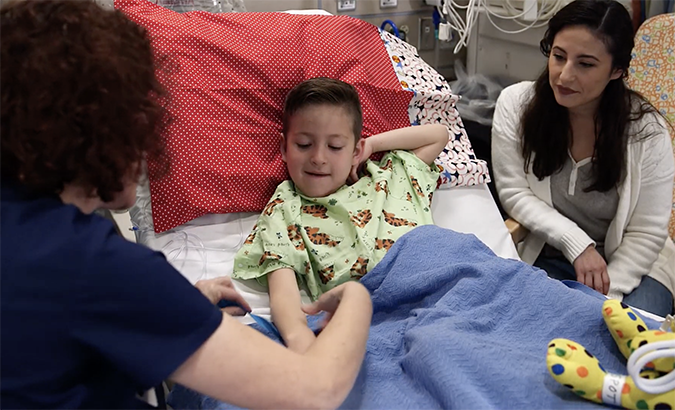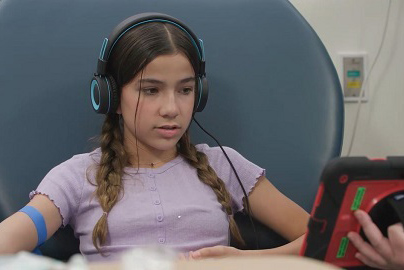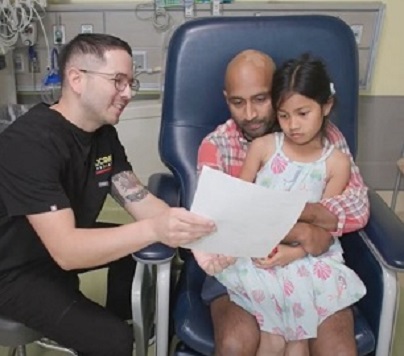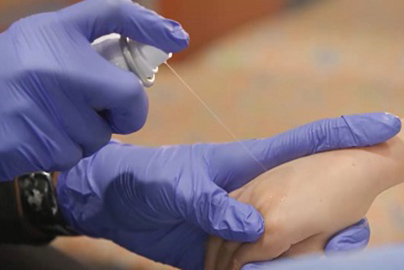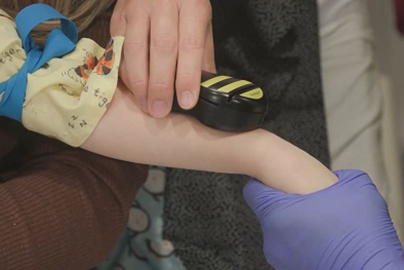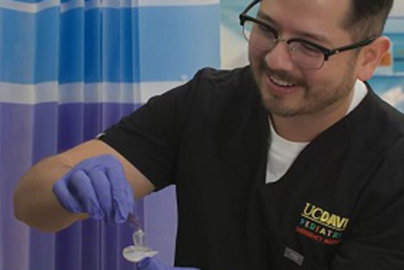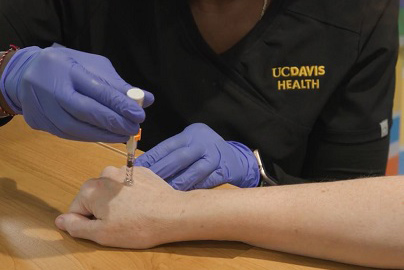Comfort Commitment
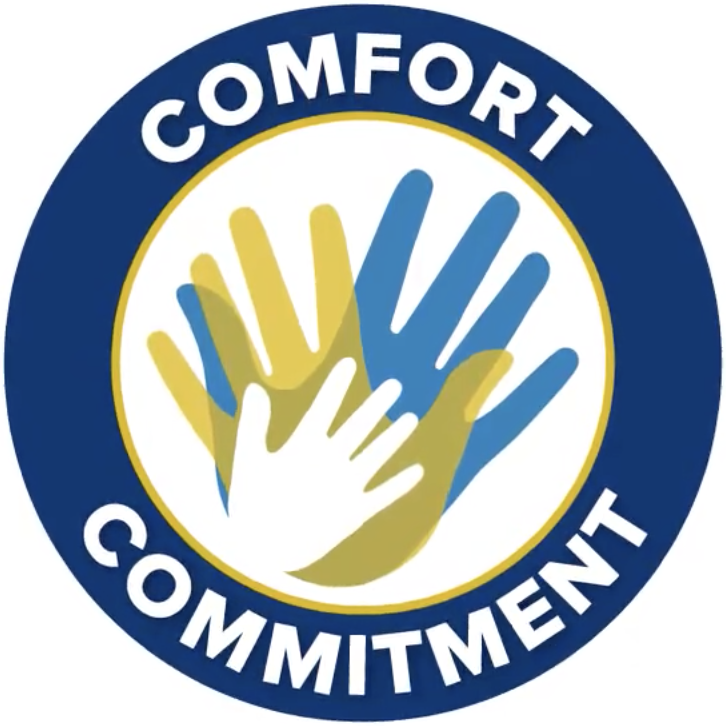
Pediatric procedures can be distressing and the Comfort Commitment is a supportive approach used to maximize coping. This standard of care helps children establish trust with their care teams and creates opportunities for success and mastery. This leads to continued positive experiences with their health care.
The fundamental patient care goals for this initiative include:
- Reduce anxiety and enhance comfort
- Strengthen coping abilities
- Empower children and families
- Unify procedural comfort measures offered
Comfort Commitment - UC Davis Children's Hospital
A four-step process that optimizes care for pediatric procedures.
- ASK about past experiences and what the child and caregiver know and understand about the procedure
- SHARE more about the procedure in simple terms using honest, age-appropriate language
- PLAN for the procedure considering: medicine and numbing options, refocusing techniques, comfort positions and a calming environment
- DO follow agreed upon plan and ensure the child feels heard as comfort measures can be modified
There are comfort options to consider for every child and procedure. You will be able to talk more with your medical team to discuss what might work best for you. The videos below describe a few options that may be possible.
-
Environment and planned distraction
Environment and planned distraction
Creating a calm environment and having refocusing items available are essential for procedure support plans.
-
Comfort holds
Comfort positioning
Comfort positioning is when a caregiver securely hugs/holds their child during a procedure. Children cope better when sitting upright and comforted by their parent/caregiver. View the Comfort Positions poster (in Spanish here).
-
Numbing cream
Numbing cream
Numbing cream has a medicine called lidocaine in it that temporarily numbs the skin and lessens the pain of the poke. Read the user guide.
-
Vapocoolant
Vapocoolant
Vapocoolant is a skin refrigerant that can last up to one minute. The cold sensation on the skin helps dull the effect of needle procedures. Read the user guide.
-
Buzzy® and ShotBlocker®
Buzzy® and ShotBlocker®
Vibration and cold (Buzzy®), or the use of blunt contact points (ShotBlocker®) can help interrupt pain sensations during procedures. The brain then focuses on these less threatening sensory stimuli. Read the Buzzy® user guide. Read the ShotBlocker® user guide.
-
Oral sucrose
Oral sucrose
Oral sucrose is a sweet solution that can be used for some infant procedures. The sucrose, provided by mouth, activates pain fighting pathways. Read the user guide.
-
Lidocaine and J-Tip
Lidocaine and J-Tip
The J-tip is a needle free device that uses lidocaine to numb the skin before a needle procedure. Read the user guide.
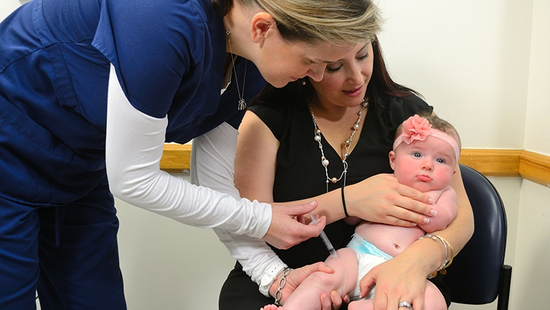
Desirable outcomes
Along with the quality of care goals outlined above, we know that positive procedure related experiences can create lasting impacts, including:
- Decreased pre-procedural anxiety
- Decreased fear of needles
- Increased adherence with vaccination schedules
- Acceptance of healthcare needs
- Positive physiologic, behavioral and cognitive affects in the neonate
The Comfort Commitment initiative operationalizes the UC Davis Strategic goal to: Lead Person-Centered Care in the best way, at the best time, in the best place, and with the best team.
Resources
Comfort Commitment Program
Email ComfortCommitment@ucdavis.edu or one of our program contacts if you have any questions about the Comfort Commitment.


